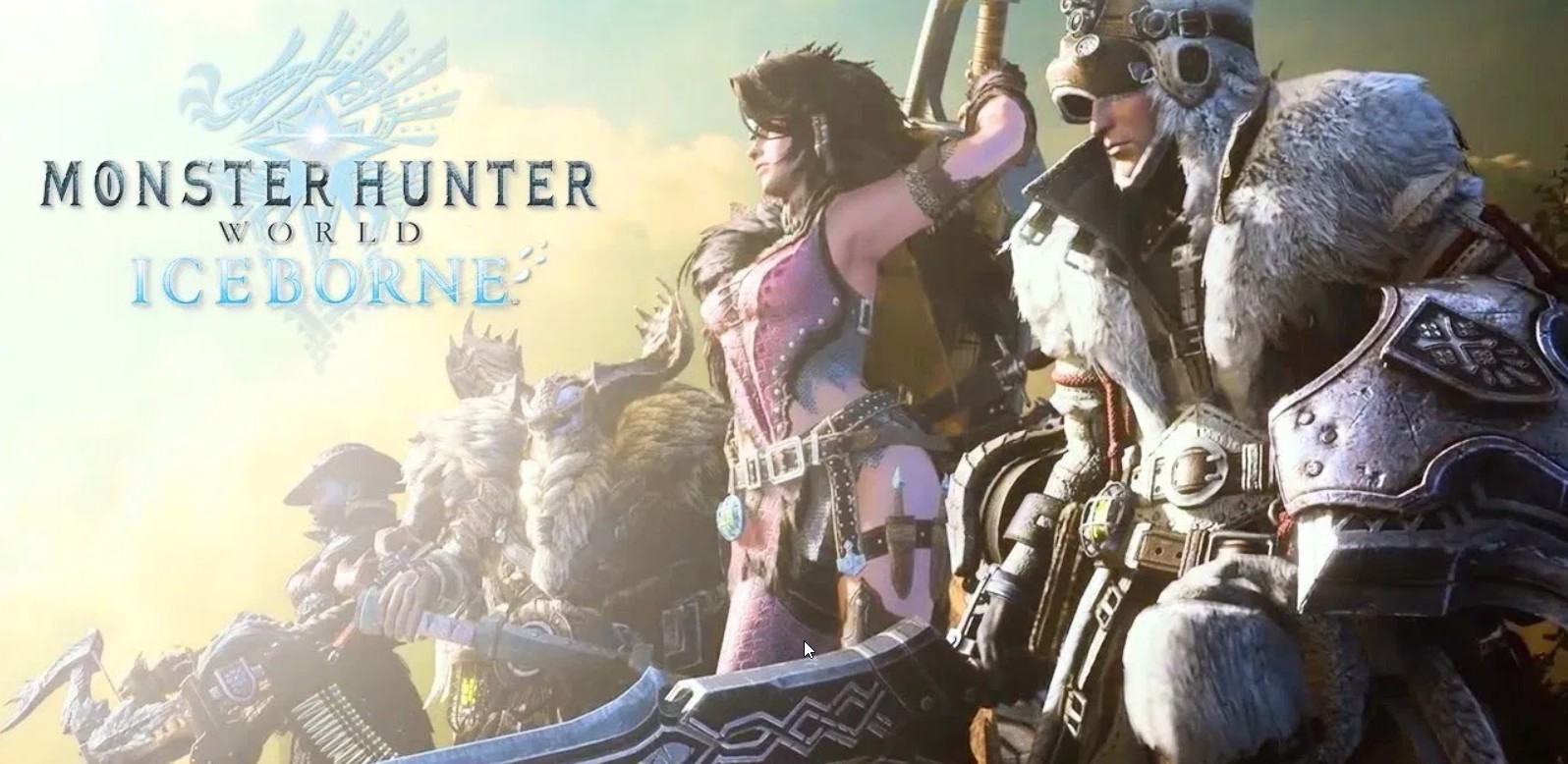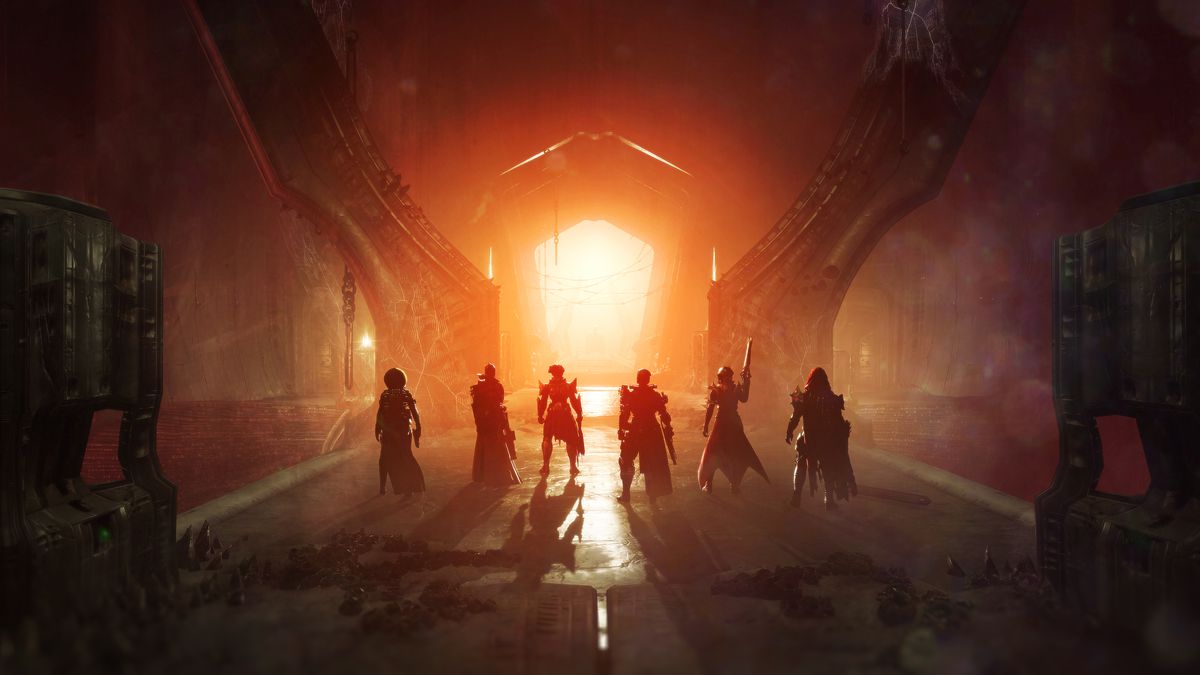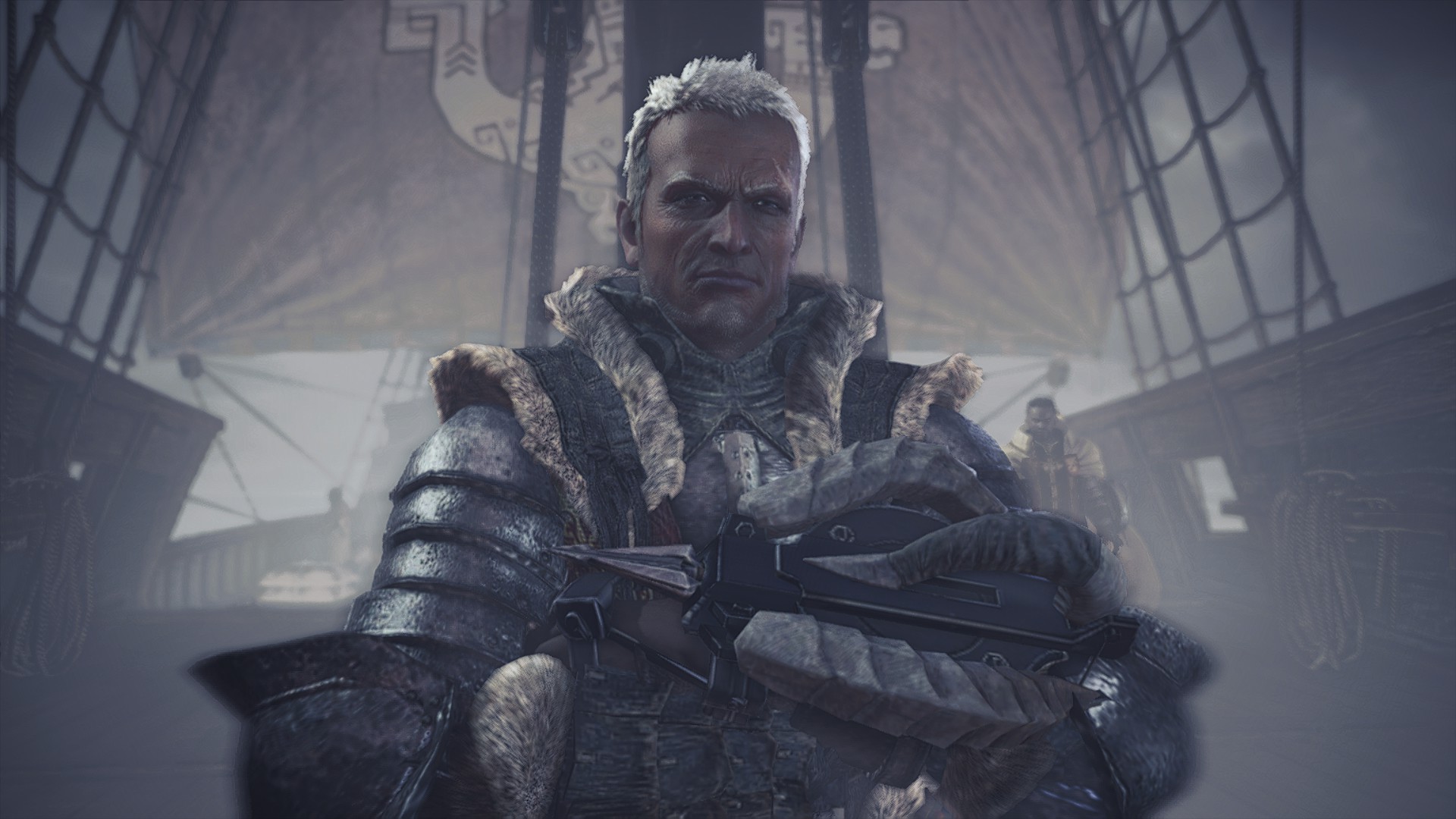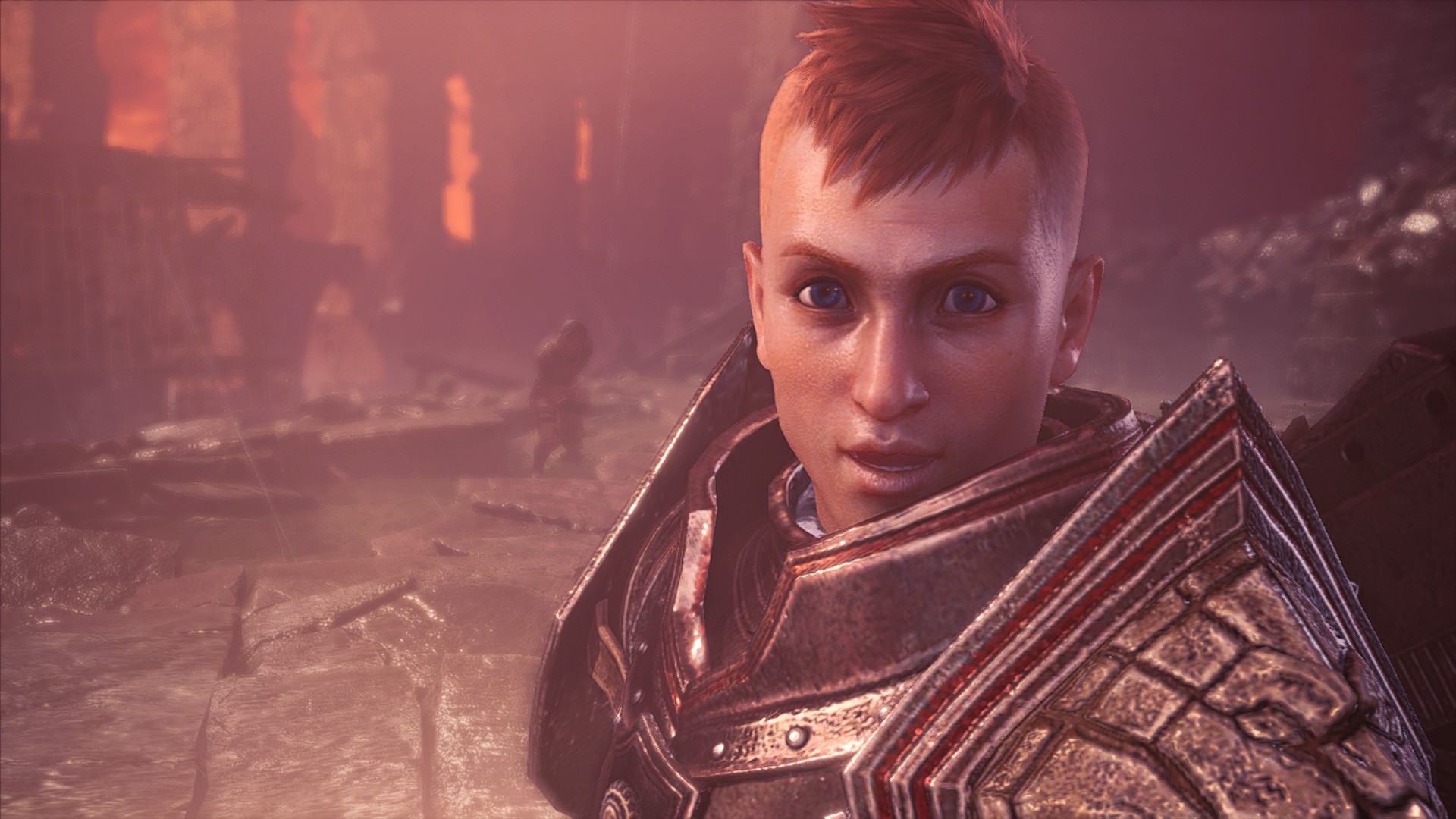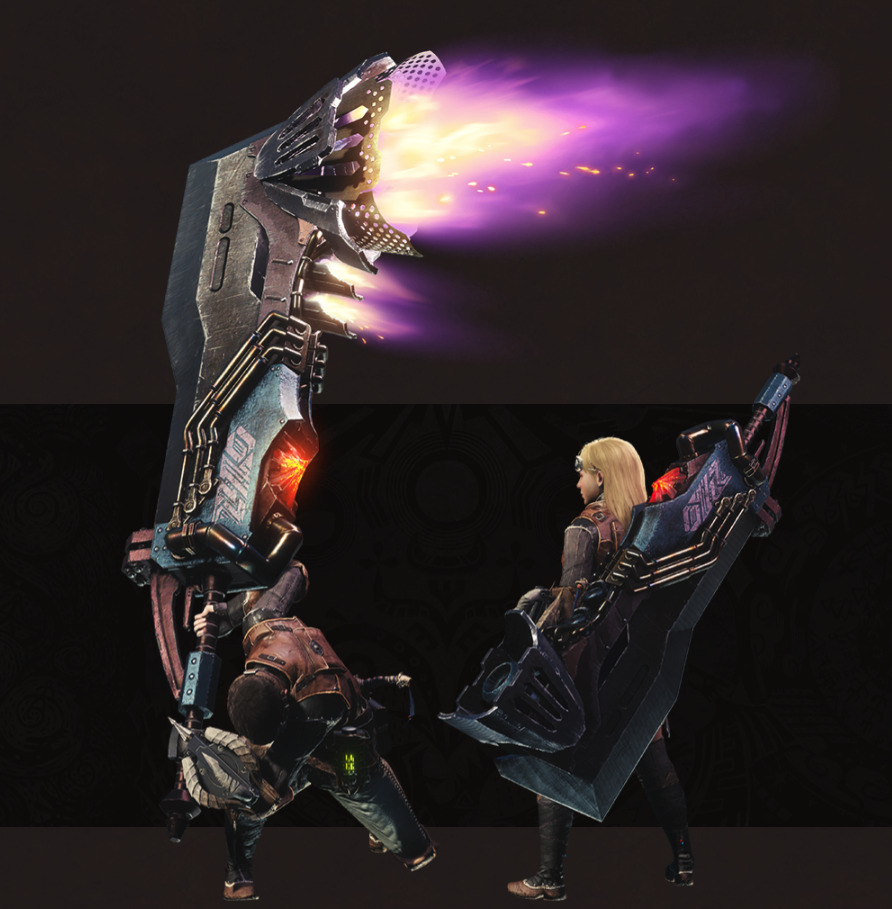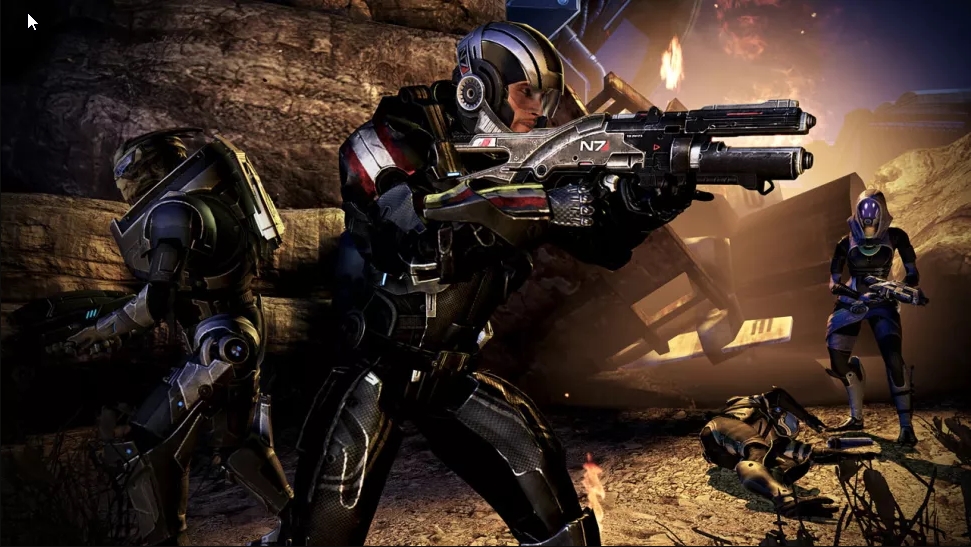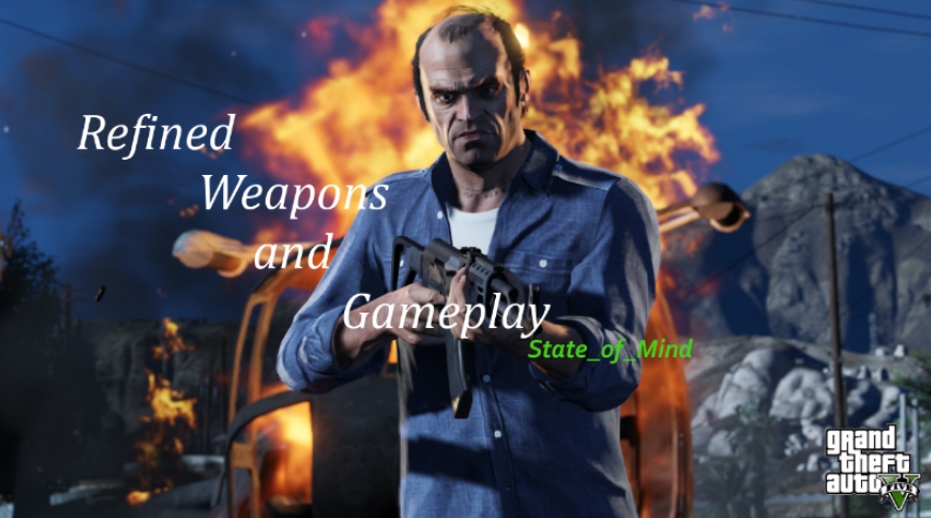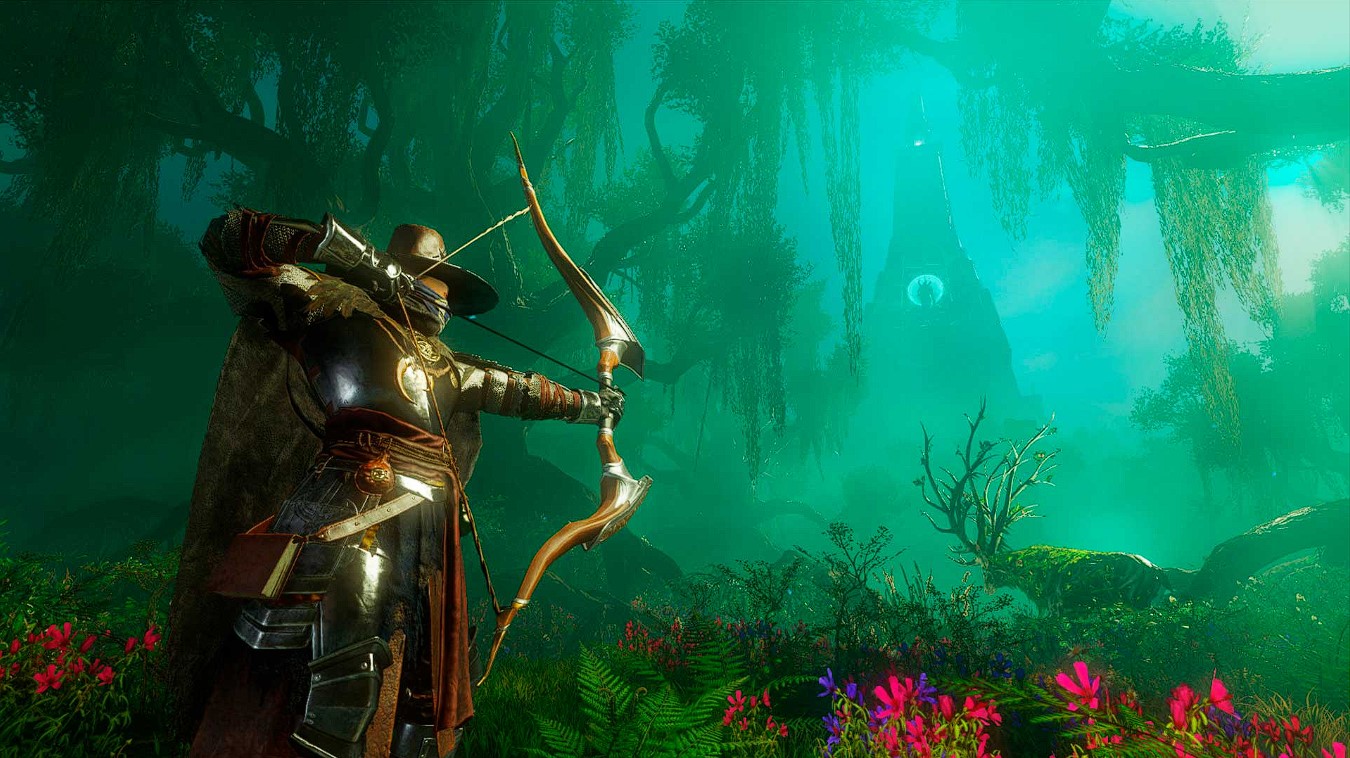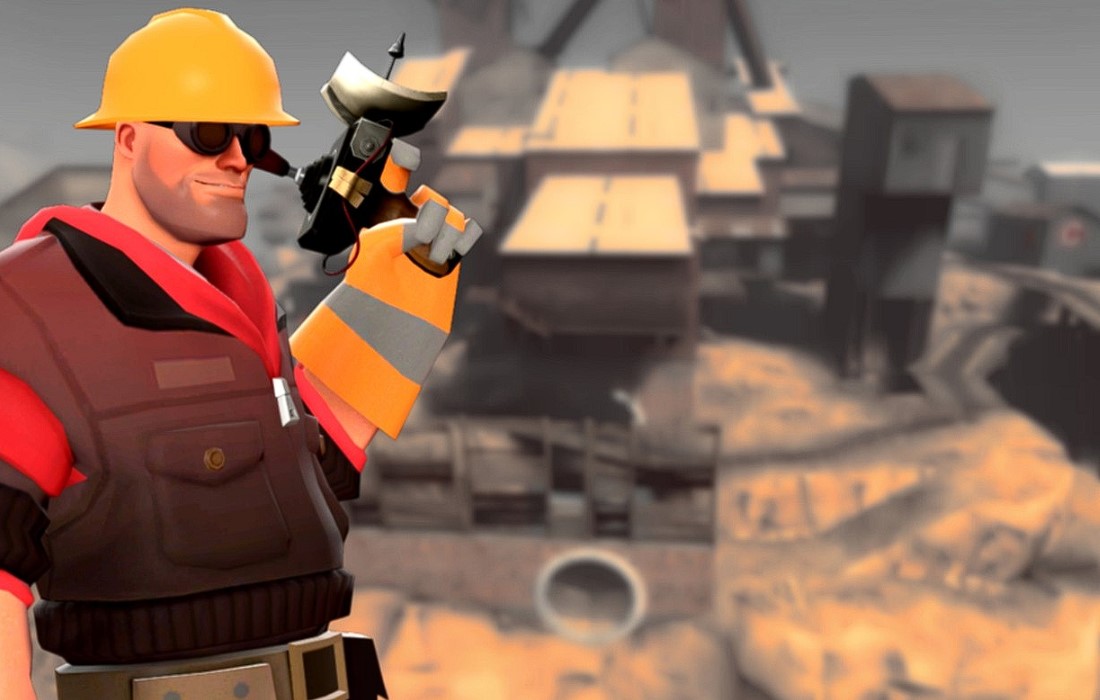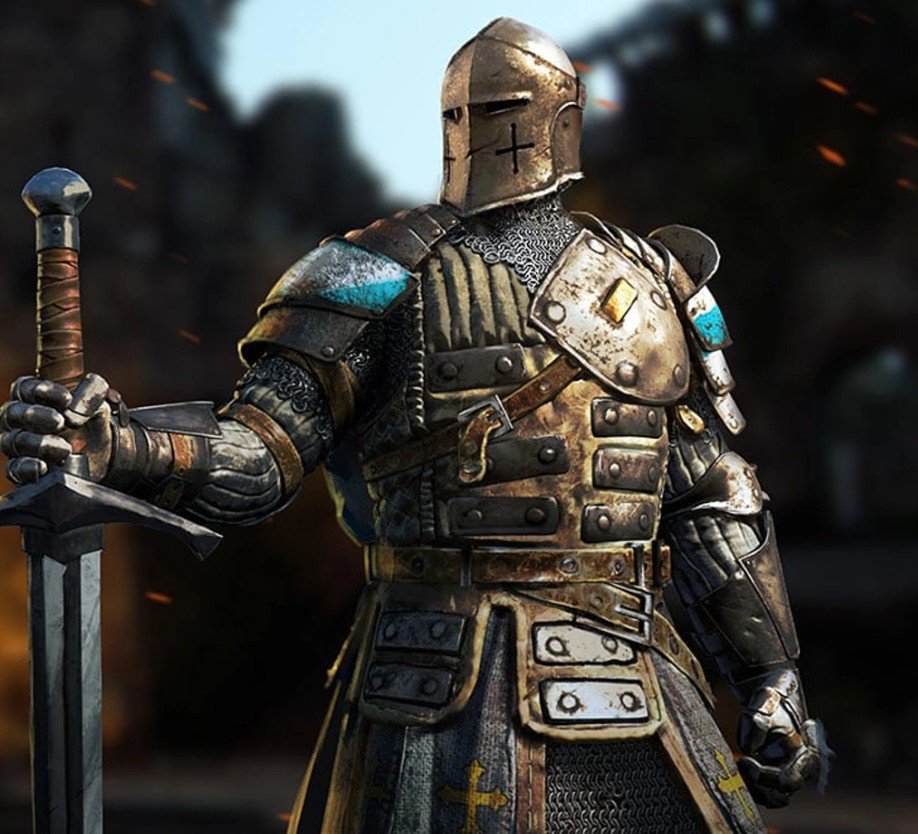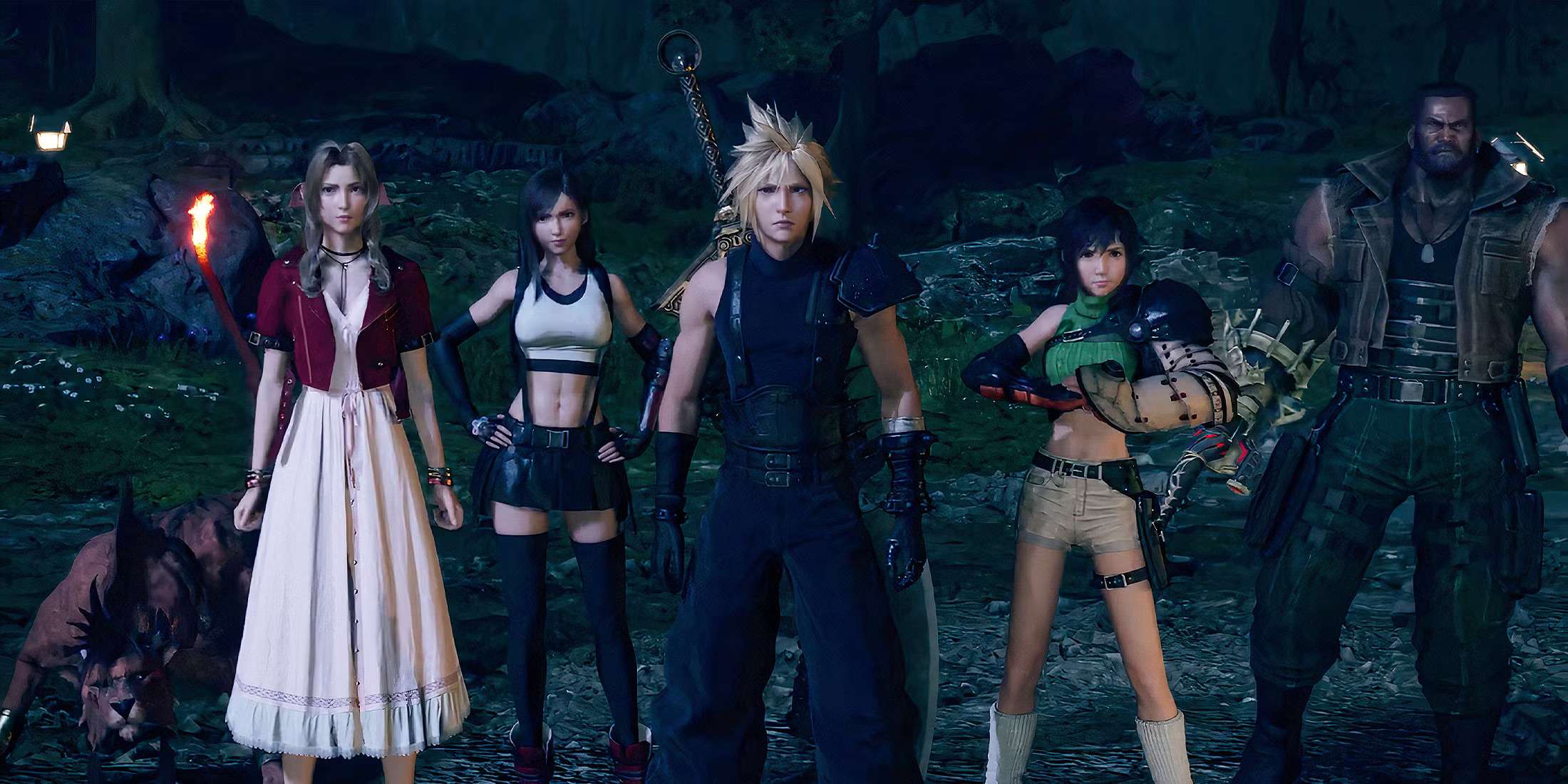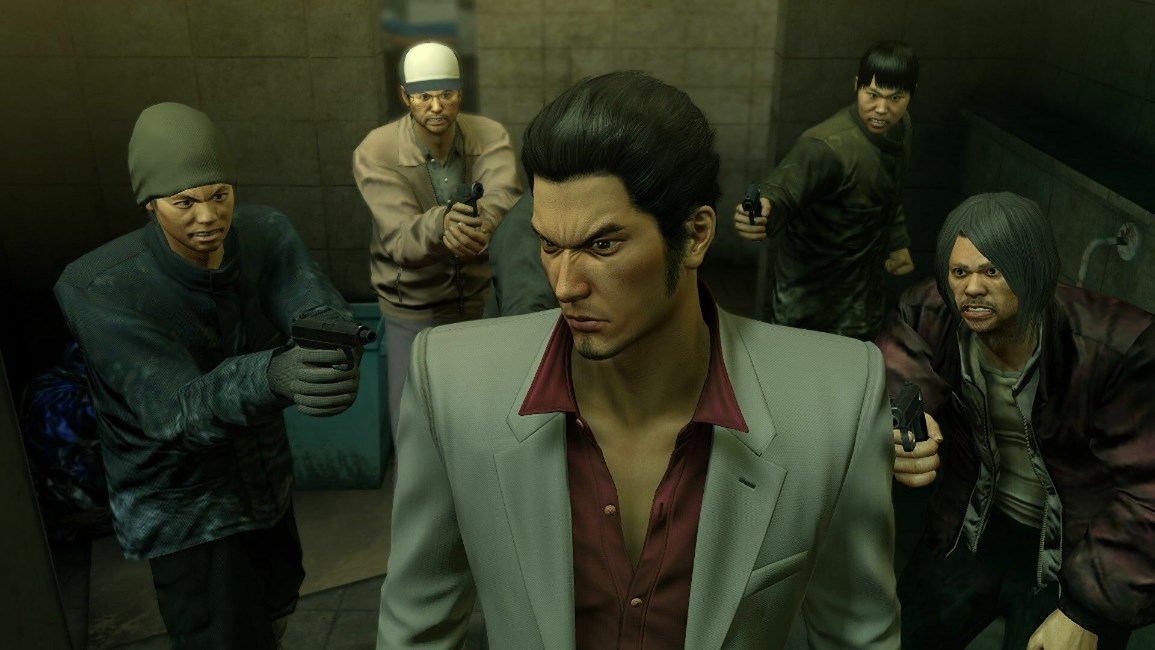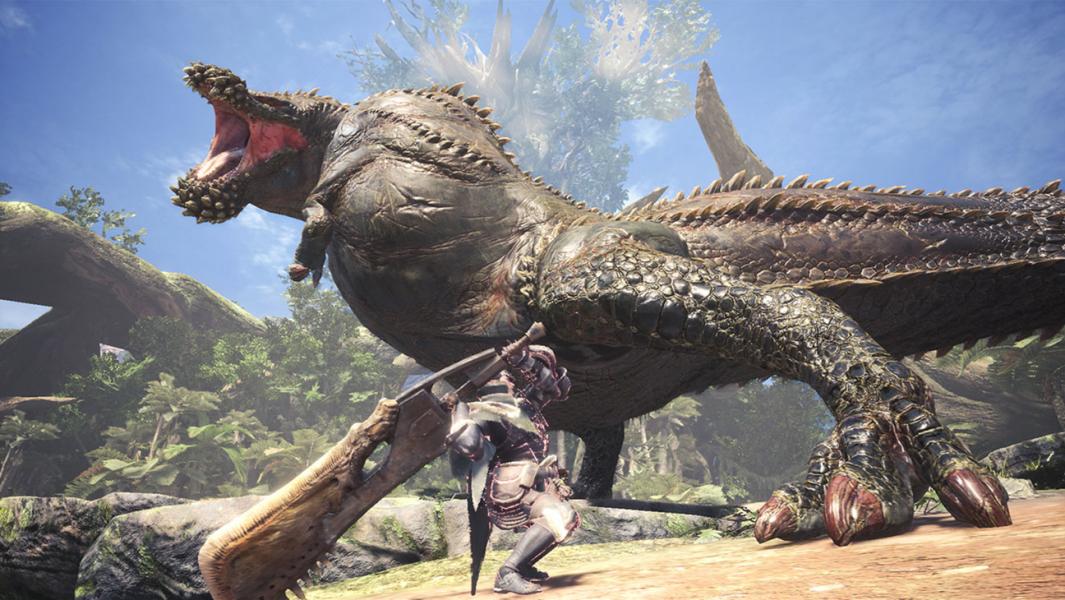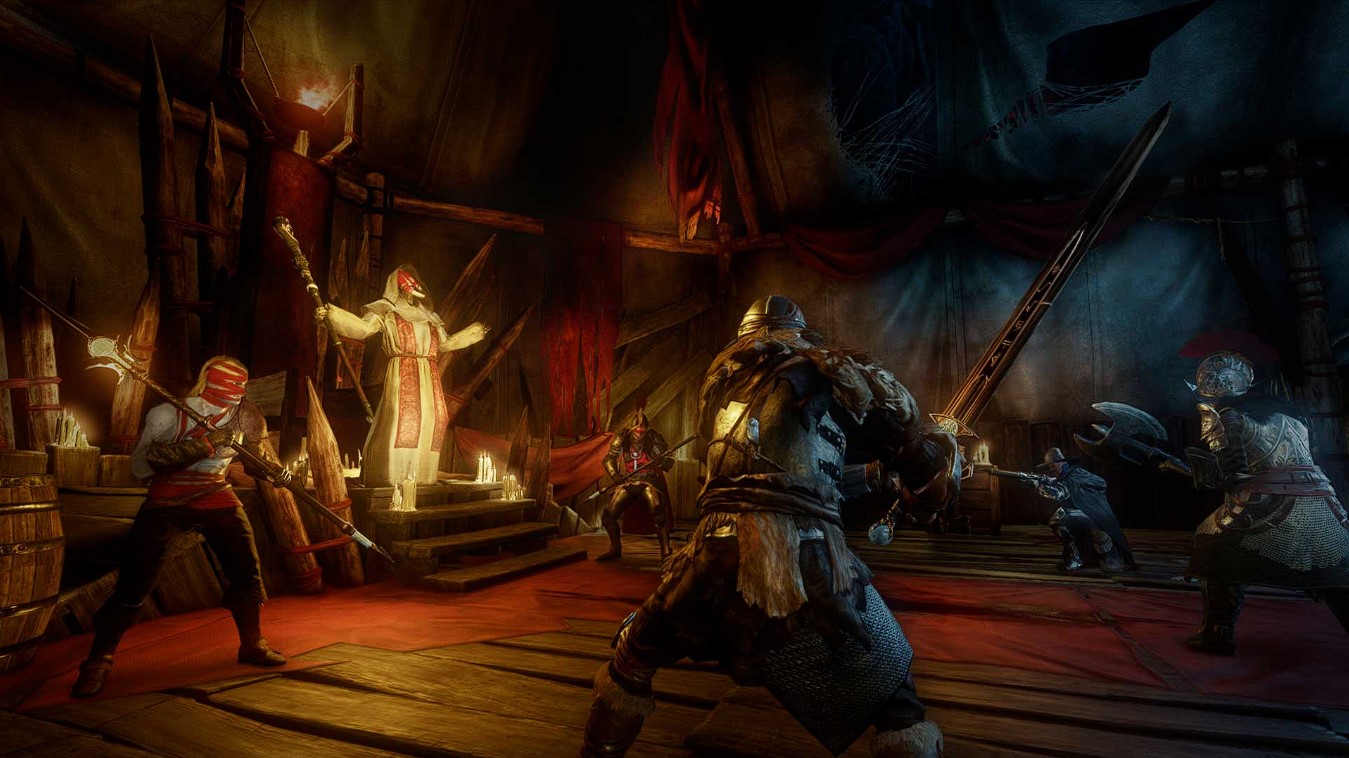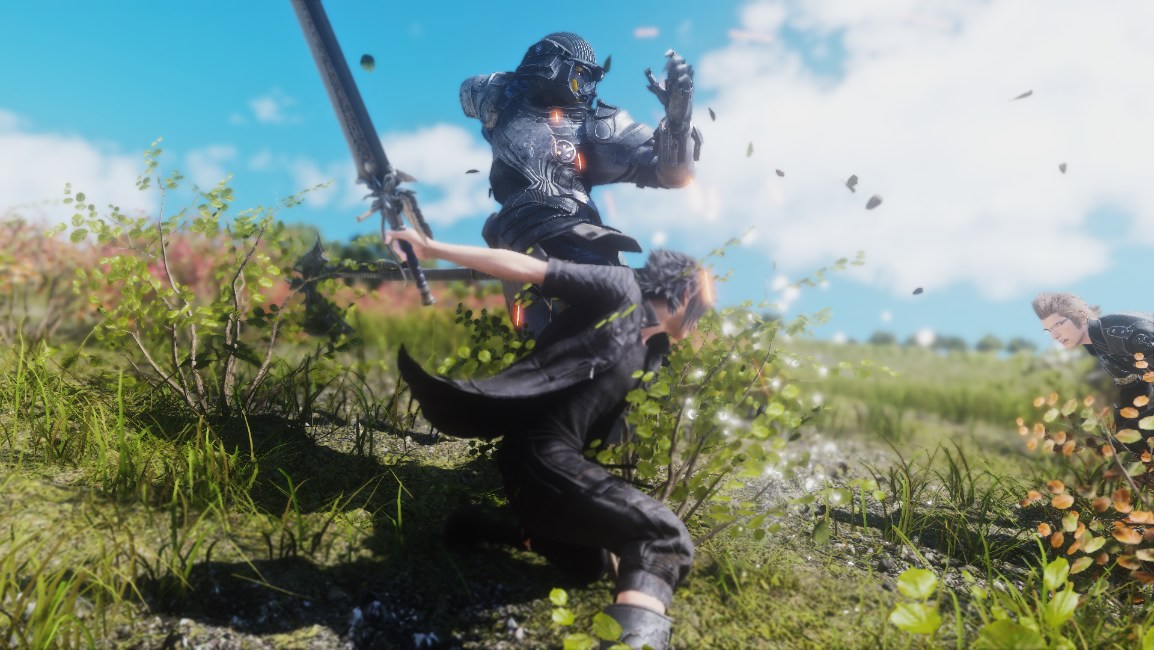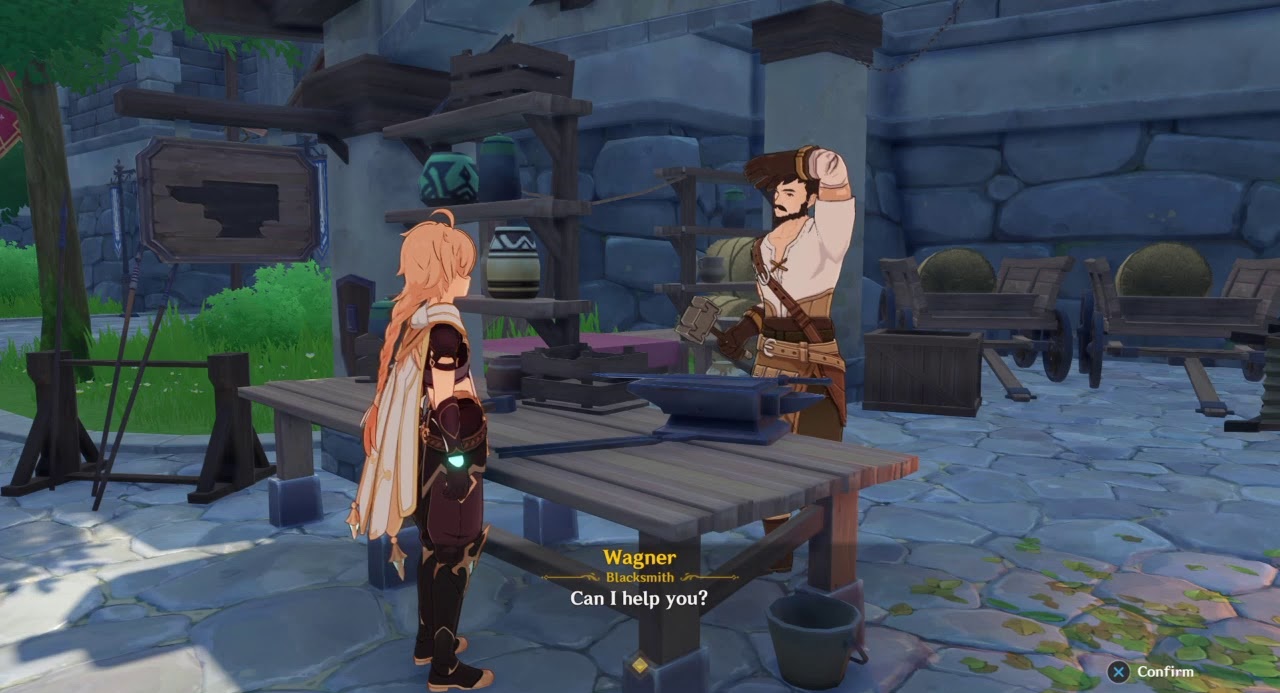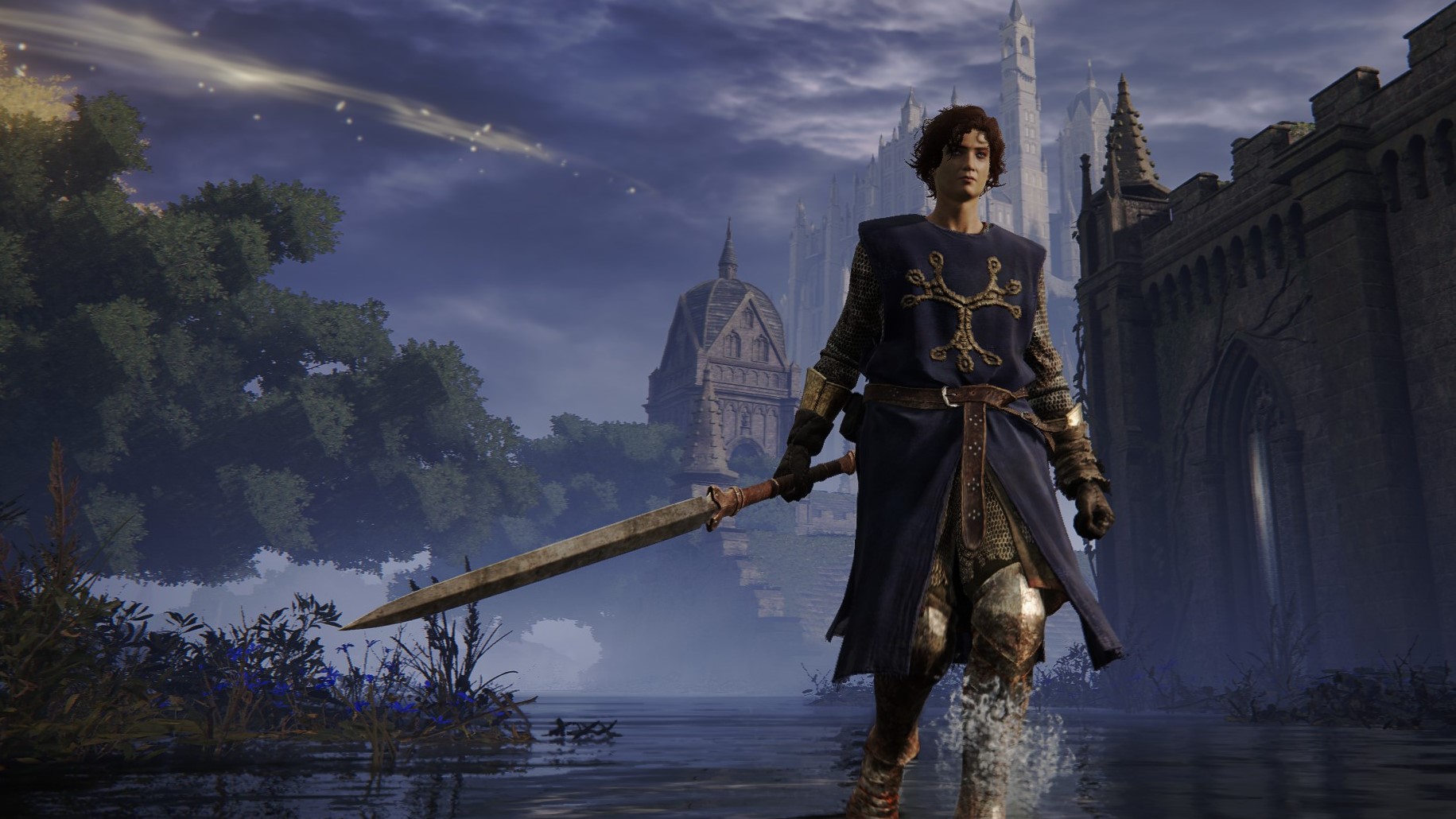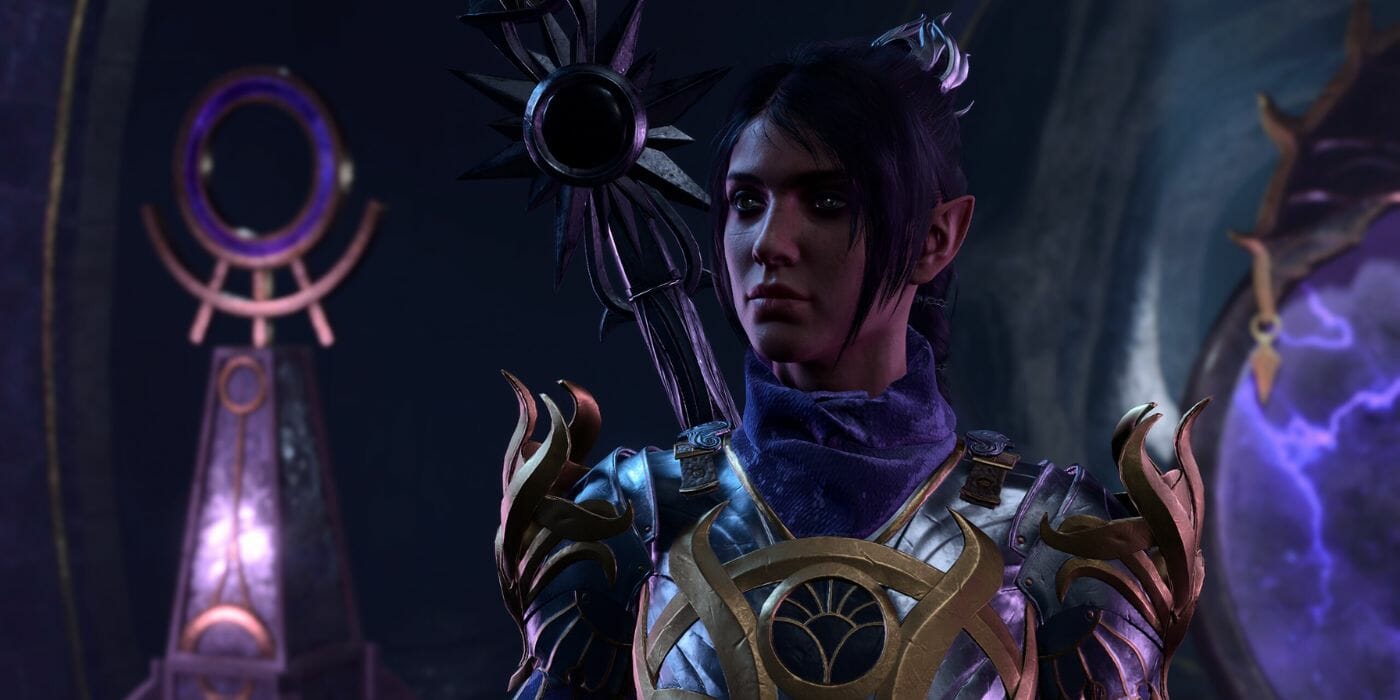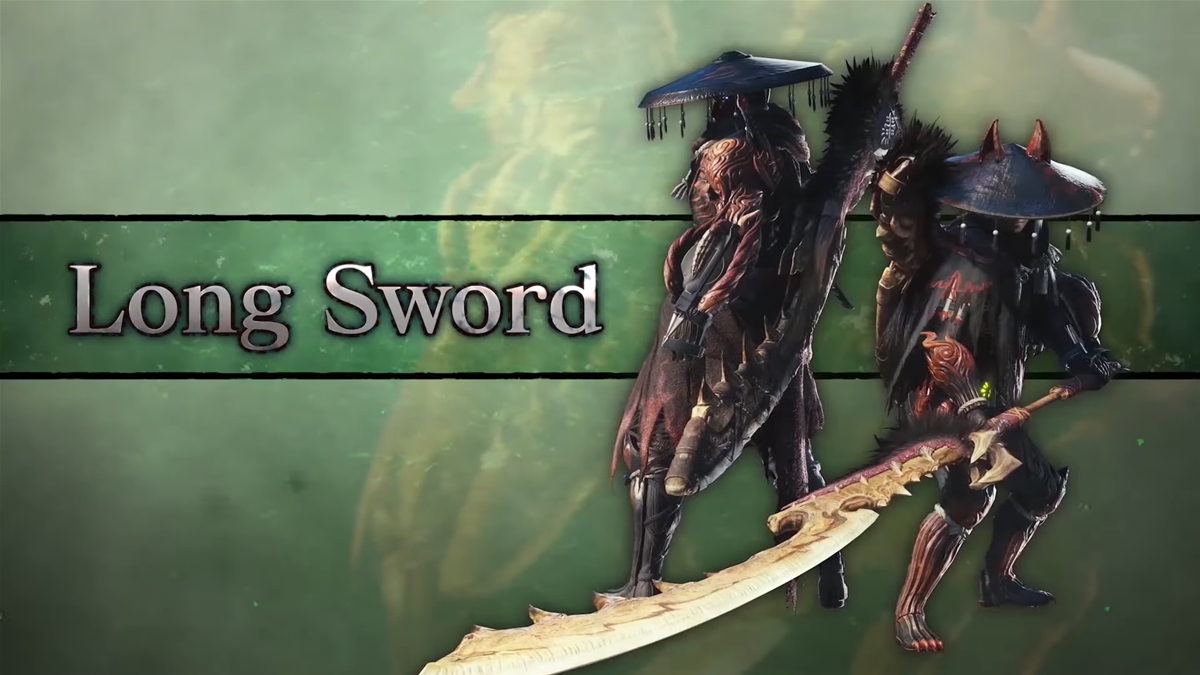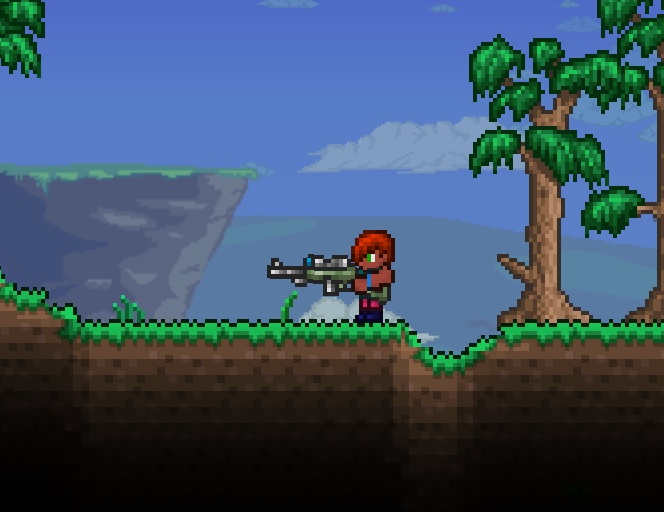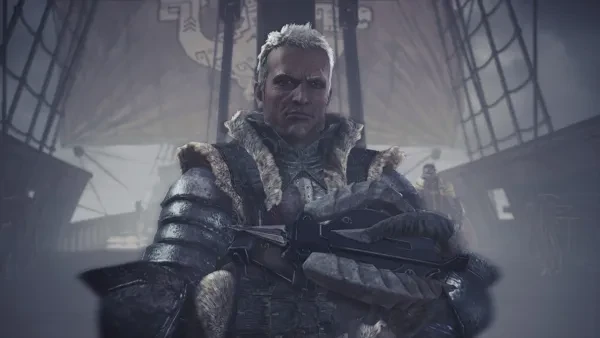
Iceborne introduced a whole new set of gameplay for each weapon
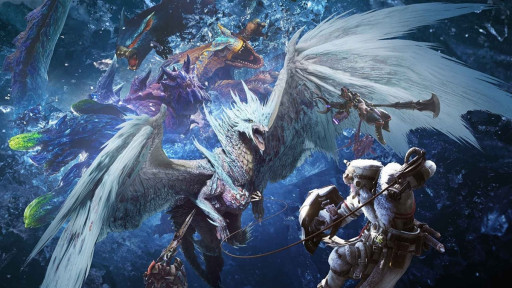
Velkhana the Iceborne Wyvern and her posse.
That’s right mate, it’s another tier list! We all love tier lists. And what’s a better tier list than one about the best possible weapon you could use to beat the living daylights out of large monsters so you can wear their skin for either armor or fashion?
Before we begin, I’d like to start this by saying every weapon in this game is viable. Each weapon caters to another person’s wants or needs. The best part of the game is the fun of finding out which playstyle best suits you and improving as you go through each hunt. This tier list is simply here to give you a little introduction to other weapons and how they fare against each other according to their strengths and weaknesses.
So, beginning from the most bottom of the bottom tier on the list, we’ll be going in ascending order based on solo play with some additional info on co-op play.
Solo Play Tier List:
C-Tier
- Hunting Horn
- Sword and Shield
B-Tier
- Switch Axe
- Lance
- Gunlance
A-Tier
- Insect Glaive
- Hammer
- Charge Blade
- Dual Blades
S-Tier
- Light Bowgun
- Bow
- Longsword
- Greatsword
- Heavy Bowgun
Co-op Play Tier List:
C-Tier
- Dual Blades
- Longsword
- Charge Blade
B-Tier
- Sword & Shield
- Greatsword
- Lance
- Gunlance
A-Tier
- Insect Glaive
- Hammer
- Switch Axe
S-Tier
- Light Bowgun
- Bow
- Hunting Horn
- Heavy Bowgun
Lastly, before we truly begin, the single best tip I can think to give anyone going co-op is to always bring Flinch Free 1. Please, bring it, I beg of you. You never know when someone’s inconsiderate enough to trip you mid-combo. With that in mind, the info ahead will assume that you always have Flinch Free 1 for co-op.
Alright, let’s get started. First comes last is the Hunting Horn!
Hunting Horn (Solo C-Tier | Co-op S-tier)
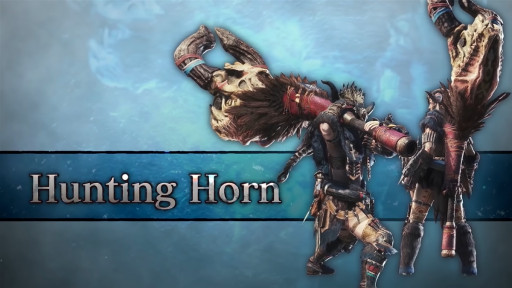
“Why do I hear boss music?” - The monster as a Hunting Horn main approaches for the kill.
Do you like bashing heads in while accidentally supporting your friends by giving them buffs? Does the idea of earning your friends’ or random people’s eternal and undying gratitude simply by joining their hunt with this monster of a weapon entice you? Or how about the feeling of exclusivity by joining the council of all 6 Hunting Horn mains? Sounds to me like you’ll love the Hammer’s musically inclined cousin, the Hunting Horn!
Now, make no mistake, the Hunting Horn is a supportive weapon, but it’s not just a support weapon. It is a weapon that plays a note for every attack, and following a proper combination of notes, you can play a song that will buff you and all other players near you.
That’s right, you benefit from the songs you play too. So not only are you enhancing your team’s damage, but you’re also piling on yours as well. With all these combined together, even without the help of a team, the damage numbers of the doot hammer can rise to some really impressive levels.
After Iceborne, the Hunting Horn got a fine new addition to its playlist called the Echo Wave. This note alone is amazing, as it deals a ton of KO damage, making it easier than it already is to knock that monster down. And we all know what happens to a monster knocked out, especially with a full party present.
With all that said, it’s easy to understand why the Hunting Horn can rank as high as S-Tier in co-op play. Just having a Hunting Horn in the party is essentially adding a 5th member with all that damage potential. But what keeps it from rising higher than C-Tier in solo play is its overall mediocre damage. It has the potential to rack up the damage values to an impressive level, but in most cases, nearly all other weapons can achieve the same numbers with much less effort.
Pros:
- Buffs are always good
- Will earn you eternal and undying gratitude from nearly every party just by joining their hunt
- Moveset is simple and easy to learn
- Deals tons of exhaust damage, draining monster stamina quickly, this leaves them wide open for powerful attack opportunities
- You will make the council of all 6 HH mains happy if you join them
Cons:
- Not a lot of defensive options
- It’s a large and heavy weapon, so its swings are slow
- Playing songs commit you to a long animation, leaving you vulnerable to an attack
- Has a move that you can cut tails with but it’s far from ideal
- I can’t believe you need to sharpen a blunt weapon (is this a sharp and flat joke about music I’m missing?)
Sword & Shield (Solo C-Tier | Co-op B-Tier)

Monster Hunter’s King of Versatility
“Jack of All Trades, Master of None” is one apt way to describe the Sword & Shield.
Just as that description implies, it’s a weapon of great variety and versatility, offering multiple different builds and playstyles to choose from. So if you feel like being that one friend that takes care of all your party’s needs while still dealing a respectable amount of damage and looking badass, pick up the Sword & Shield!
A bit like the Hunting Horn, the Sword & Shield is a misunderstood weapon. Where the Hunting Horn is often mistaken as mainly a support weapon, the Sword & Shield is most commonly thought of as a beginner’s weapon.
While that’s an understandable assumption, I feel that it’s a little unfair to leave it at that. It’s definitely quite easy to pick up and learn along with the game’s mechanics as a beginner since it is the only weapon in the game that allows you to use items with your weapon unsheathed. However, I believe that mastering the weapon is more than just showing your skill with the weapon alone.
What I mean is, by mastering the weapon, you also master how the game works. And while that is true for every weapon, I feel that it is more apparent with the Sword & Shield because of the versatility it offers.
Just as the name says, the Sword lets you cut and stab away at a fast rate, allowing for great elemental damage and quick status ailment build-ups like Sleep and Paralysis. Meanwhile, the Shield not only serves to block a good amount of attacks at the cost of stamina but it can also be used for attacking, dealing blunt damage for that sweet, sweet KO as long as you focus on the head.
But on top of all that, with the introduction of Iceborne came the “Perfect Rush” combo. It is a really satisfying move to pull off that not only looks cool but also deals a ton of DPS (damage per second). Perfect for a mixed bag of high raw and elemental damage, as well as building up status ailments.
Unfortunately, much like the Hunting Horn, the reason it stays in Solo C-Tier is because of its overall damage numbers that can be achieved by other weapons with much fewer resources and effort.
Pros:
- Small and light weapon, it has high attack speed, maneuverability, and mobility
- Can block a good amount of attacks
- Great variety of builds to offer, ranging from raw damage builds to elemental/status ailment builds, and even support-focused item builds
- Allows you to use items while unsheathed, making for speedy item usage in case a party member needs some quick heals from that Life Powder
Cons:
- Short range makes it difficult to reach enemy weak points on large monsters
- Mediocre to slightly above average damage
- What the S&S can do in a single area can be easily outclassed by other weapons that specialize in those areas
Switch Axe (Solo B-Tier | Co-op A-Tier)

Mighty Morphin Power Axe Mode
Do you like anime? Do you like big weapons? What about transforming weapons? Big explosions? Are you the type to rush headfirst at the enemy with reckless abandon, focusing on nothing but dealing damage?
If each of those questions got a check out of you, then allow me to introduce you to the Switch Axe! It’s a sword, but it’s also an axe. It's default mode is an axe, but most of your strongest moves will be done in sword mode.
While in axe mode, your mobility is high, offering you great maneuverability in the middle of your combos. It also has wide and high-reaching attacks, making it easy for you to aim for the wings, heads, and tails of large monsters.
On the other hand, sword mode trades your agility and mobility for faster and harder-hitting attacks. It also has natural Mind’s Eye, meaning your attacks will not bounce even if you aim for the hardest monster parts. These attacks also come with built-in phials, allowing you to dish out additional elemental, status, or raw damage per hit. The sword form’s damage potential is so high that, if the stars align, it can compete for the highest DPS out of all melee weapons.
It’s also one of the most stylish weapons! Knowing when to weave to and from each mode in the middle of combat is like a performance art of its own. Making it, in my opinion, one of the most beautiful weapons in the game.
So it’s a fun, elegant weapon that has insanely high damage potentials in the right conditions. Why is it in Solo B-Tier and Co-op A-Tier?
Before Iceborne, the Switch Axe had terrible defensive options while in sword mode while having less than stellar damage during axe mode. More often than not, you’ll be dealing most of your damage during sword mode. And unless you know the hunt like the back of your hand, you’ll be a sitting duck for attacks as your only defensive option is a short distance hop with little iframes (invincibility frames).
After Iceborne, however, the Switch Axe was given the love it deserved! While sword mode remained largely the same, save for some changes with the clutch claw, axe mode was given additional evasive maneuvers mid-combo and a “Power Axe” mode. During this mode, the axe glows, dealing additional damage and making it easier for you to flinch monsters.
But what makes it so great in Co-op play? You see, there’s this hidden mechanic the game doesn’t tell you about. And it’s that every time your sword passes through a unit (be it a monster, the corpse of a monster, or even another player) it will trigger your phial’s explosion. This can tack on additional DPS in insane numbers in the right conditions.
That Flinch Free 1 is looking real handy now!
Pros:
- Smoking Sexy Stylish combos
- Stupid high DPS potential
- Natural Mind’s Eye during sword mode allows you to cut through monster parts that would normally make your weapon bounce
Cons:
- Even after Iceborne, the sword form still has little defensive options, leaving you with a glass cannon playstyle
- Your strongest hitting moves commit you to long animations (you can cancel out of these, but it takes time to learn the proper timings)
- Sword mode is always hungry for sharpness, so you have to constantly supply it in a hunt
Lance (Solo B-Tier | Co-op B-Tier)
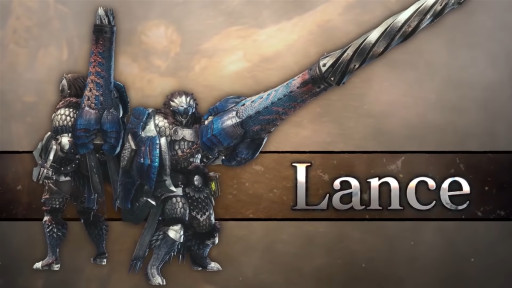
The Mobile Fortress — leave it to your local Lance main to kebab your monster for you.
One of the iron wall weapons, the Lance has possibly the sturdiest shield in the game. If you’re ever tired of running out of a monster’s way and just want to keep poking it until it’s dead, the Lance can give you every opportunity to block nearly everything and hit back almost instantaneously.
Much like the name implies, it is a long piercing weapon that allows for precise attacks at enemy weak points, letting you reach high places like wings, tails, and heads. Paired with a great shield, it allows you to block nearly all attacks, and with the right build, even lets you survive normally unblockable attacks from some of the most powerful monsters in the game.
Save for one move that lets you run like a train, your mobility with the Lance is generally slow and the only evasive options available for you are hops that can be chained up to 3 consecutive times. For players that are more used to dodge-rolling, the hops and low mobility may feel quite clunky. But once you get used to it, you’ll feel that it operates just as smoothly as the rest and that it is all the Lance will ever need.
While it may not have the most stellar damage, the way it racks it up is by letting you stick to the monster's side for a steady flow at its weak points. With this playstyle, you are, quite literally, a thorn on a monster’s side.
Just keep poking, and poking, and poking. And if you can read the monster’s attack, raise that shield and block! Or better yet, counter it for a swift but heavy thrust! Dodging is unnecessary, there is only blocking and poking. Simple, right? It feels especially good when you block that one move that typically carts you even at full health and get right back into the fight with little to no delay. Looking at you, Nergigante.
With the addition of Iceborne, the Lance was introduced to the Counter Claw. It’s a simple move that looks really cool and feels absolutely satisfying to pull off every time. Basically, instead of poking back right after blocking, you clutch onto the monster. Following the counter, there is also a brief moment of immovability to make sure you aren’t thrown off right away.
All that put together, the Lance is a simple and efficient weapon with average damage values but insane defensive capabilities. It’s a great weapon to take either for solo hunts or co-op plays. If you ever get exhausted from pulling off some really difficult moves, try the Lance! It’s comfy!
Pros:
- Very simple moveset
- Allows for easy access to monster weak points with very precise, high-reaching attacks
- Potentially the strongest shield, lets you block and counter nearly all monster moves
Cons:
- Average damage values
- Very few moves for attacking, can get kinda boring and repetitive after a while
- May feel clunky to players unused to hops
Gunlance (Solo B-Tier | Co-op B-Tier)
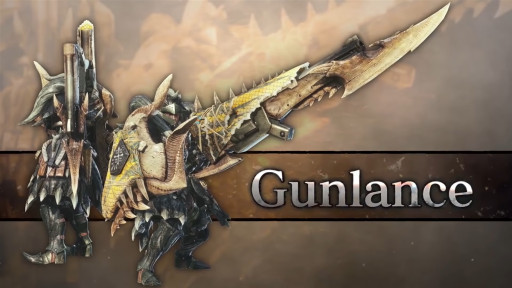
“Come, walk the path of explosions with me!” - Megumin, a Gunlance main, probably.
The other iron wall weapon. If you like playing the kind of tank that deals explosive damage right in the monster’s facial pores, then the Gunlance sounds like the perfect weapon for you!
The Gunlance, much like the name implies, is a long piercing weapon that is also capable of dealing explosive rounds at every combo. Paired with one of the strongest shields in the game, it lets you become the tank you were always destined to become. It operates just like the lance in the sense that you stick to the monster’s side as long as you can, but instead of just poking, you deal additional explosive damage too.
And with the arrival of Iceborne, the Gunlance was introduced to the “Wyrmstake Blast”. You basically take your slinger ammo and add them to your shells. You then stab your stake into any monster part. If you hit this monster part with your shellings, it will trigger additional explosions for more damage. Naturally, the damage goes up depending on the type of shelling attack you use.
The fun part is, in a party full of Gunlance users, these stakes can stack on a single monster, and each explosion will trigger all other stakes, provided they’re within range. Now, that’s a lot of damage!
Unfortunately, if you truly care about damage values, you won’t be getting a lot of it in most cases with this weapon. A gunlance’s shelling damage relies heavily on the number of shells you can dish out at maximum. And while there’s a great variety of gunlances to choose from, not all of them are built with the same amount of shells.
But if all you’re looking for is a chill hunting session, either solo or with a party, then the Gunlance might just provide that for you! Though, with how often a monster changes targets in a hunt, paired with a gunlance’s low mobility, you may end up having a hard time instead.
With all that said, the Gunlance’s shelling is capable of dealing fixed damage to any part of the monster. This allows you to easily break even the toughest monster parts from some hard-to-reach places. In that sense, it sounds super useful when hunting for materials!
Pros:
- Very simple moveset
- Has a powerful shield, allowing you to tank some of the most powerful monster moves
- The shelling’s fixed damage that ignores monster defense allows you to deal full damage to any and all monster parts
Cons:
- Low mobility makes it hard to chase the monster in party sessions
- The shelling’s fixed damage hard caps your potential DPS even after Iceborne
- Not only does each blast consume your shells, they also take a small but very noticeable bite of your sharpness away with it too
Insect Glaive (Solo A-Tier | Co-op A-Tier)
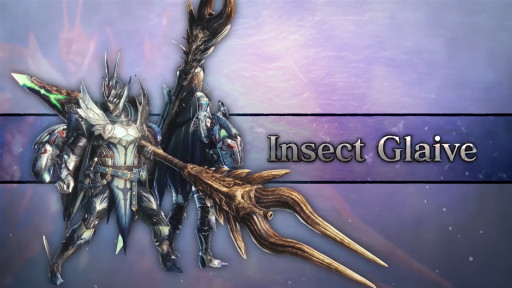
The Aerial Master — challenging Flying Wyverns for aerial superiority since MH4.
Ever feel like the game is lacking options to challenge for aerial superiority despite having tons of monsters that are constantly up in the air? Also, are you fond of huge bugs? If you answer yes to both of these questions, then I welcome you to try riding this helicopter to the skies.
Now, I will admit, this is my main — I’ve spent most of my time hunting with it. It is both my comfort weapon and serious weapon. I’ve spent at least a few dozen hours on each weapon, but I still love this the most. Despite my biases, I will try to give you a more objective look into it.
The Insect Glaive is a very mobile weapon. It has quick combos that you can quickly roll out of, as well as special moves that vault you high into the air allowing you to give chase or dodge away while also preparing you for your next attack. It has two parts, the Glaive and the Kinsect.
The Kinsect, your little bug friend, can extract essences off of a monster one hit at a time. These extracts differ depending on the body part it attacks, but essentially, they give you buffs: Attack, Speed, and Defense. Gather them all at once and you get a substantial bonus to these buffs at an extended duration.
But that’s not the only use of your Kinsect friend. Paired together with the Glaive, the Kinsect can focus its attacks on any monster part you mark. As it attacks, it will sometimes leave a cloud of whatever element or status effect it has (this is separate from what your Glaive has), and if you hit it with your Glaive, it will trigger the effect. Triggering Blast three times in a row as you gracefully glide while spinning like a chopper is an incredible feeling!
You can essentially bring two different elements or status effects (or one of each) to any hunt. Whether in solo or co-op, this utility is always a useful asset. The Insect Glaive is also a master of mounting enemies thanks to its multitude of aerial combos. In a party, a mounted monster is basically a training dummy waiting to get hit.
With the introduction of Iceborne, the Insect Glaive was given the ability to collect two extracts before returning to you at the cost of feeding your Kinsect one slinger ammo. This powers up the Kinsect as well, depending on the type of slinger ammo you feed it with.
As for the Glaive, it was given a strong aerial attack called the “Descending Thrust”. Just as the name implies, you stab down from above, dealing heavy damage. Not only that but it also marks the body part you hit, which is then quickly followed by a strong drilling attack from your Kinsect.
Pro tip: A slow Kinsect will pass through monsters slower but will retain the same drilling speed, letting you deal higher DPS.
It’s a match made for challenging heaven!
Pros:
- Great mobility, lets you challenge anything that flies for aerial superiority
- Stylish combos
- The Kinsect brings good utility to your build (also, it’s a cute bug friend!)
- Mounting master
Cons:
- All of your aerial combos consume a lot of stamina and overall damage is lower than your ground combos
- Damage values are slightly above average at best in a lot of cases
- Collecting Kinsect essences can be both frustrating and time-consuming
Hammer (Solo A-Tier | Co-op A-tier)
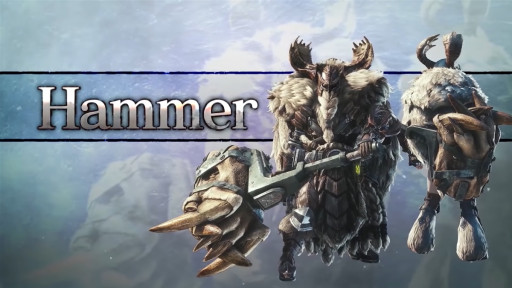
“When you wield the Hammer, every head starts to look like a nail” - every Hammer main.
The King of KOs, Lord of the Bonks! With the Hammer in your party, it has no other place than at the helm. Its goal is simple — aim for the head. Though while it is a weapon of simplicity, it is peerless at what it does.
Basically, hit the monster on the head many, many times. And once you’ve done enough brain damage, wait for it to fall over, then continue. This should help you build up KO damage for the next knockdown.
Simple but effective.
Though while you want to be constantly hitting the monster’s head, you won’t always have easy access to it, especially in a party. So focusing your blunt damage on the legs and arms is an effective way of not only breaking parts but also flinching or tripping them over for more damage opportunities.
However, with the introduction of the clutch claw mechanic from Iceborne, smashing heads in just got even cooler. Following a charged attack, you can fire your clutch claw for the “Flying Smash”. As the name implies, you fly towards the monster part you latch on to and smash! You can then follow up with your weapon-specific clutch claw attack.
You can also pull off the Flying Smash after performing the Midair Spinning Bludgeon, the very reason why Hammer mains love slopes.
Pros:
- Very easy to KO monsters
- While not at the same level as the Hunting Horn, it can drain monster stamina, leaving monsters tired, which leaves them wide open for great attack opportunities
- Tons of damage
- Slopes are your best friends
- Deceptively mobile considering it is a heavy weapon
Cons:
- Needs to constantly hit the head to be efficient (you can focus the legs to trip monsters, but hitting the head is still where you shine the most)
- Not a lot of defensive options
- Very short range
- Can’t cut tails
- Capcom, I am begging you, help me understand why a blunt weapon needs sharpening
Charge Blade (Solo A-Tier | Co-op C-Tier)

Only graduates of Charge Blade University with a Master’s degree can properly use this weapon.
If you want to flex your brain as well as you can flex your muscles, then the Charge Blade might just be the perfect weapon for you. Best known as one of, if not the most technical weapon within the community, it is a large sword and shield that transforms into a huge axe when combined.
At first glance, it can appear to be quite daunting to learn as it is a weapon that requires you to memorize certain combo flows to set you up for your big finisher. But in reality, once everything clicks, it is actually much simpler than most players make it out to be. Not “easy”, but simply “easier”.
To begin, the Charge Blade’s default mode is the sword and shield. It has high maneuverability, quick attacks, and a strong shield. In a sense, it can do it all! Attack, dodge, and block — it’s like carrying a swiss army knife! It is also how you will be charging up your phials to power up the sword and the shield, which in turn, powers up the axe.
Transforming to the axe mode, your movement slows down. However, your attacks are both high in reach and damage. After powering up the shield, switching to axe mode carries over the boost. Hits with the charged-up weapons deal phial damage according to the type it carries. It can be Impact, which deals KO damage, or Elemental.
With all the phial charging done, you can choose to release that collected energy one at a time, all at once after one long satisfying combo, or bust it out with one big move that deals a ton of burst damage. Regardless of how, rinse and repeat until the monster is dead.
With the addition of Iceborne, the Charge Blade received the “Savage Axe mode”. In this mode, you can power up the axe as long as you have at least one phial. This transforms your axe into a giant pizza cutter, allowing for a huge increase in DPS. What makes it even better is if you charge up the shield before going into Savage Axe mode, each hit from the pizza cutter will dish out additional phial damage.
So not only do you have a powerful burst move, you also have a strong DPS combo should you want it. It’s insane!
Unfortunately, with all great things, come a couple of weak points. Due to the nature of the weapon and how erratic a party hunt can get, you may just have a hard time hitting monsters with your strongest moves. Or even just charging up your weapon can take a lot of time and leave you frustrated.
Pros:
- High burst and DPS options
- Can do it all, has a move for every situation (can probably even do your homework for you)
- You automatically have a master’s degree displayed in every room of your house just by mastering it
- Can deal KO damage depending on the phial type you carry
- Badass combos and finishers
Cons:
- Needs 1000 hours to learn the basics
- Axe mode’s defensive options are very limited
- Loves consuming sharpness as much as it loves consuming phials
- Your most hard-hitting moves commit you to a long animation, leaving you open for attacks
- Missing your most hard-hitting moves is quite costly and frustrating as you most likely have to repeat everything from the top
Dual Blades (Solo A-Tier | Co-op C-Tier)
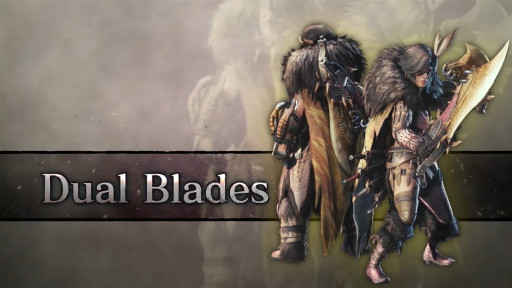
“Haha, damage values go brrr,” - Dual Blade mains.
The Dual Blades, one of the anime weapons of the game. This is the Sword & Shield if it decided to ditch the shield and grab another sword so it can slice that monster into ribbons. Much like the Hammer, it is a simple weapon with one goal in mind: Deal. Massive. Damage.
“But a lot of weapons can deal a ton of damage,” No, you don’t understand. It has the highest potential DPS out of all melee weapons. The amount of damage the Dual Blades can deal in an average hunt is what the Switch Axe can deal when it gets lucky. At much less effort.
It is a light and swift pair of blades, dealing an insane amount of burst in a short amount of time despite the numbers of each hit being smaller than average. Fast relentless attacks is its game, and should you ever feel the need to evade, dashing at a moment’s notice is just one button press away.
To achieve the highest damage possible, the Dual Blades need to tap into its Demon Mode, which you can go into after filling up the Demon Gauge simply by attacking. While in this mode, your everything is faster. Attacks, movement, and even the rate you deplete your stamina (you drain stamina simply by entering it). It’s only during this mode will you have access to Demon Flurry. It is your most damaging move, but once you start, you’re locked in place until you finish the animation.
So, your keys to achieving the highest numbers with the Dual Blades are knowing when to enter and leave Demon Mode, when to use Demon Flurry, and wise stamina management.
After Iceborne, the Dual Blades received the Evade Shot. It’s a move that allows you to dodge mid-combo while firing your slinger ammo, letting you get out of harm’s way while still keeping up the damage for a possible flinch. Your iframes during this move are quite generous too!
It’s very clear to see why this weapon deserves its spot in Solo A-Tier and at the same time, Co-op C-Tier. It gives little to no utility to a party, the short range makes it hard to reach for tails, and its small size and light weight give it a very high chance of bouncing off of armored monster parts.
Pros:
- Highest potential DPS out of all melee weapons
- Stylish moves, fast and nimble movement makes for great hit and run tactics
- Your local butcher envies you and you’re probably the blender in your kitchen
- As a general rule, weapons that hit multiple times in a small amount of time are great for inflicting status effects and racking up elemental damage (and there’s no faster melee weapon)
Cons:
- Very short range, it’s almost no different from punching monsters
- It eats sharpness and drinks stamina for its daily nutrients
- Dodging, while easily accessible, is your only defensive maneuver
Light Bowgun (Solo S-Tier | Co-op S-Tier)
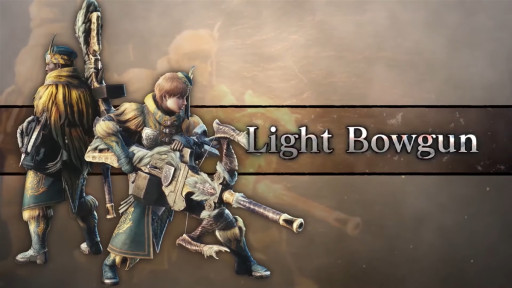
The Heavy Bowgun’s cute but still hard-hitting little brother.
This used to be often thought of as one of the few “support” weapons in the game. Due to the great utility it brings to a hunt with its wide variety of builds to choose from, it’s an understandable assumption.
However, much like its other Bowgun counterpart, it can pack quite the payload with its varied ammo selection, modding, and armor skill options. But unlike its heavier counterpart, the Light Bowgun, like the name implies, keeps you on your toes for quick evasive maneuvers that allow you to loop back into your damage rotations with little to no delays.
So if you’re looking for a ranged weapon that offers high mobility along with damage and utility that doesn’t fall far behind, then the Light Bowgun just might be the ranged option for you!
Its combos are extremely simple, all you have to do is aim, shoot, and reload — rinse and repeat throughout the whole hunt. Instead, its complexities and depths come from the sheer variety of ammo selection, bowgun mods, and even armor skill options you’re presented with. And with a finite number of ammunition you can bring with you to a hunt, careful planning and multiple return trips back to camp to resupply may be necessary.
You also have the Wyvernblast, the special ammo type unique to Light Bowguns. It is a mine you plant on the ground that is triggered by attacks either from you or the monster. You have three of these at a time, and you can either choose to plant them all at once or sparingly depending on the situation.
When Iceborne came around, the Light Bowgun received a couple of nifty custom bowgun mods. One of them is the sliding reload, which is pretty self-explanatory and plays really well into the nimble shooter playstyle that it’s known for.
The other mod is the Wyvernblast Counter which lets you shoot the mine at the monster’s face instead of planting it on the ground. The trade-off is that it has a much shorter fuse but if the monster triggers it, it deals a more powerful explosion, hence the name.
To reiterate, it’s a highly versatile ranged weapon that offers great utility and maneuverability. It wasn’t known for its damage in the base game as that is what its heavier counterpart was for, but the community gets very creative from time to time. So if you also want some disgustingly high damage values, go sticky with your ammo.
It works every time.
Pros:
- Extremely mobile, makes for easy damage upkeep even while on the move
- Its great utility and versatility are highly valued in both solo and co-op hunts
- Has quick and easy access to some hard to reach monster parts
- Offers some insane elemental damage potentials with the right build
Cons:
- Finite ammo and very reliant on armor skills, optimized builds are typically quite expensive
- May require careful planning and/or multiple return trips back to camp in a single hunt
Bow (Solo S-Tier | Co-op S-Tier)
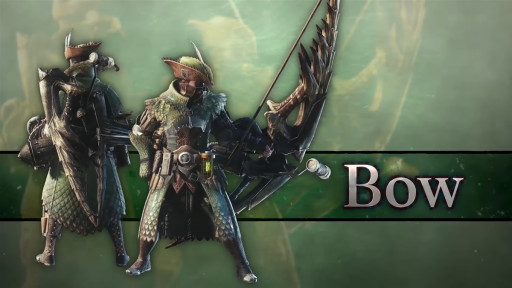
Your gateway from melee to ranged
Much like the Light Bowgun, it is a weapon that brings a ton of utility and variety to both solo and co-op plays. But where the Bowguns are considered long-ranged weapons, the Bow is, more often than not, a mid-ranged weapon.
It also has a few different combos that you can learn, offering some interesting gameplay choices that can help someone who’s more used to melee combat feel at home should they ever feel curious about trying out the ranged weapons. So if you’re interested, try the Bow out first!
But unlike the melee weapons where the depth and complexity are found in their combos, the Bow, much like the other two ranged weapons, shows them through various ammo types. But in the Bow’s case, they’re called ammo coatings.
It also has a few interesting combo options, allowing you to deal KO damage, for that sweet knockdown. When this opportunity presents itself, you can either spam your arrows to deal whatever status/elemental coatings you have — or even just pile up on more raw damage. You can also use your special move called the Dragonpiercer. This attack deals multiple hits as it goes through a monster, so I highly recommend doing it down the monster’s length.
Unfortunately, this locks you to a long animation, so do be careful when using it. However, the rest of the Bow’s combos are done in an instant, allowing for quick evasive maneuvers after every shot. It’s also worth noting that you can charge every shot to a level of 3 at the cost of stamina.
With the addition of Iceborne, the Bow learned a new powerful one-shot move called the “Thousand Dragons”. This uses up all your slinger ammo and fires spread shot with your arrow, dealing a devastating multi-hit with high flinch potential. You can use this move at any moment, but firing without slinger ammo naturally deals much less damage.
Pros:
- Extremely mobile, can keep firing shots even while on the move
- Has more interesting and stylish combos than the Bowguns
- Its longer range allows easy hits on some very hard to hit places, like a large monster’s back or wings
- Great utility and variety, performs really well in solo and co-op sessions
- Insane raw and elemental DPS potential with the proper builds
Cons:
- Can be quite expensive to build an optimized set
- Glass cannon playstyle
- I hope you brought a lot of meat and Dash Juice for your stamina
- Normal and Close Range Coatings may be infinite, but the rest of your more useful coatings aren’t
- Despite the added range, it isn’t as long as the Bowguns’, so you’re still fighting within the monster’s reach most of the time
Longsword (Solo S-Tier | Co-op C-Tier)
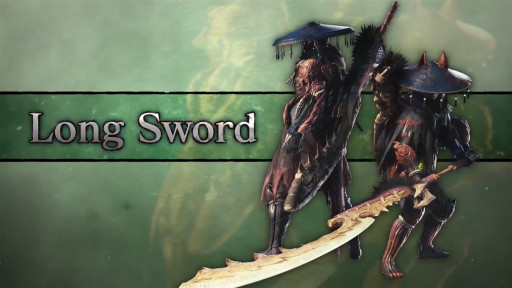
Simultaneously the most famous and infamous weapon in Monster Hunter.
Ever wanted to trade blows with towering monsters? Countering their every move with your blade? Cutting through their hides, slicing off their tails in style, doing it all without a hair out of place?
You’re in luck!
The Longsword is a weapon of speed, power, and elegance. Where most weapons offer power while taking away mobility or vice versa, the Longsword keeps you light on your feet while letting you dish out some flashy and devastating moves and countermoves. It is, honestly, the best of both worlds.
It also has a relatively simple moveset, making it a great weapon to pick up as a beginner to the franchise. Though, in the hands of a master, it’s a truly powerful weapon both to use and to watch. It’s no wonder why it’s the most popular weapon in the community.
As the name suggests, it is a long cutting and stabbing weapon, allowing you to reach some fairly high monster parts like tails and wings with ease. It also has a Spirit Gauge, one that fills up as you keep attacking the monster. After filling it up or at least close to it, you can unleash the Spirit combo that will charge your blade up to the next Spirit level as long as you land the final hit.
Your Spirit level can rise up to 3 levels: White, Yellow, and Red, in ascending order. These levels raise your attack the higher your level goes but it doesn’t stop there. Achieving even just the White level allows access to your most devastating move, the Spirit Helmbreaker.
However, if you ever feel that you have little opportunities to unleash the Spirit combo and land the last hit, proper execution of the Longsword’s countermoves can not only help you get to the next Spirit level in an instant but also get you one step closer to becoming the master samurai you were always meant to be. So keep learning those iframes!
With the arrival of Iceborne, what was already a great weapon in the base game was brought to even greater heights with the addition of the Iai Slash and Iai Spirit Slash. The first move lets you passively fill-up the Spirit Gauge provided it hits, while the second move unleashes a powerful slash that consumes one Spirit level… unless you time it properly. If you wait at exactly right before you’re about to get hit, you will unleash an even stronger slash that does not consume your Spirit level, all while getting out of harm’s way.
Mastering the Longsword is mastering the iframes. And mastering this technique is the epitome of swordsmanship and badassery.
Pros:
- Elegant, flashy, badass
- Great mix of high raw damage and mobility
- Built with the right armor skills, it can quickly break monster parts as well
- High risk/high reward playstyle is immensely rewarding
- Powerful countermoves that not only get you out of harm’s way but also reward you by dealing devastating hits in return
Cons:
- You’re the reason why Flinch Free 1 is mandatory in co-op plays
- High risk/high reward playstyle is immensely punishing
- Your most powerful hits require a bit of setup, so missing them can get very frustrating, and oftentimes breaks the flow of your combo
- Sharpness is its favorite meal
Greatsword (Solo S-Tier | Co-op C-Tier)
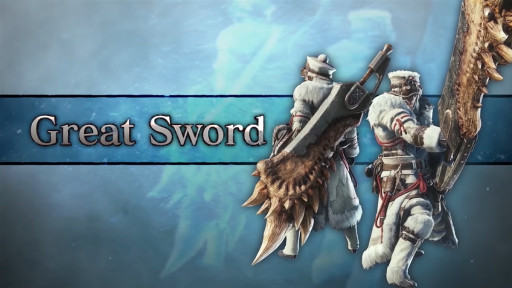
“Yes, I DO have nothing but raw damage on my build. Why do you ask?”
One of the OG weapons of this long-running franchise, the Greatsword. If the idea of dealing upwards of 500 or even 2000+ damage in a single swing at the cost of moving like a turtle with your weapon drawn sounds appealing to you, then by all means! Grab that thick slab of metal and start chopping monster heads right now! Or tails, don’t let me tell you how to live your life.
Now, please, hear me out. While it’s a simple and easy weapon to pick up and learn, effective use of this weapon requires a ton of patience and in-depth knowledge of the hunt due to mobility being your biggest glaring weak point. Your swings are immensely slow, charging times are just as slow, and your evasive options are just as limited. Basically, you turn into a sitting duck the moment you draw your weapon, so you’ll often see yourself running around with your weapon sheathed as you wait for the right opportunity.
But once you gain the knowledge of the hunt, swinging that huge slab of metal, making a direct impact, and then watching that shiny 4-digit number pop up on your screen for a brief moment is, quite simply, the greatest feeling ever.
During solo play, the Greatsword shines the most. With the monster’s attention focused solely on you, there’s a level of manipulation you have that lets you play however you want with the knowledge you’ve gained. This is especially important to the Greatsword because of the weaknesses it has. In an ideal solo session, monster hunts end within 7 to 8 minutes.
During co-op, however, the Greatsword will have a harder time finding the right opportunity to land hits due to the unpredictable nature of party hunts. And most of the time, your biggest offer to a party hunt is your powerful single hit for wake-up calls, which isn’t always available and rarely happens more than once.
However, when Iceborne dropped, the Greatsword’s True Charge Slash was not only improved but also given a nifty new move that lets you charge into it much faster. The way it was buffed is that the first hit of the TCS buffs the big meaty hit that follows after, making for greater damage values. And the new move is a slinger shot with high flinch potential that follows directly into the TCS.
Hitting monsters with that sweet, sweet 4-digit hit has never been easier.
Pros:
- BIGGEST SINGLE HIT DAMAGE IN THE GAME
- Very simple moveset, easy to remember
- Having the Greatsword automatically buffs your shoulder, making it the true strongest weapon of the game, allowing you to tackle some monsters out of their most powerful attacks like Nergigante’s divebomb
- You can also block a good amount of attacks with it
Cons:
- It takes 10 years to charge the TCS without the right armor skills or slinger ammo
- Requires patience and in-depth knowledge of monster patterns to be efficient
- You still take a bit of damage from shoulder tackling attacks
- Little to no utility for co-op plays
Heavy Bowgun (Solo S-Tier | Co-op S-Tier)
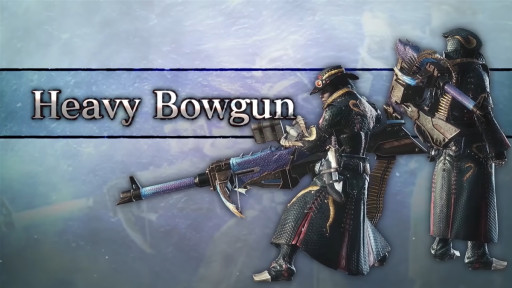
Monster Hunter’s BFG
Unlike its agile little brother, the Light Bowgun, with its plethora of elemental damage, status ailments, and low recoil in between shots, the Heavy Bowgun brings in the heavy artillery to the hunt. Its purpose is clear and that is to destroy everything in sight with sheer raw damage.
So if playing like the Terminator in Jurassic World sounds like your thing, there’s nothing better than to go the Heavy Bowgun way.
Like the other ranged weapons, its combos aren’t particularly varied and operate pretty much the same. However, unlike its lighter counterpart, its focus on ammunition revolves around sheer raw damage. Boasting the highest damage potential in the entire game, the Heavy Bowgun has been topping the speedrun charts for years in a lot of categories. It’s quite easy to pick up and learn too when the learning curve is pretty shallow compared to a lot of other weapons.
In both solo and co-op plays, the Heavy Bowgun reigns supreme as it has no real weaknesses save for its low mobility and finite ammunition. But unlike other weaknesses, there are quick and easy solutions to such problems.
For mobility, the Heavy Bowgun has a gun mod that gives it a shield that rivals that of the lances. So instead of worrying whether you have enough time to move away, simply raise that shield and take the hit! For ammunition, careful planning and return trips back to camp have always been the solution for every ranged weapon.
In all honesty, with a weapon this good. It should have a tier of its own. So forget the whole Solo S-Tier, Co-op S-Tier thing. From now on, the Heavy Bowgun is in the Heavy Bowgun-Tier.
Heavy Bowgun (Heavy Bowgun-Tier)
Pros:
- The damage it deals is more than enough to shred through even the tankiest monsters with ease
- Extremely easy to pick up and learn
- The long range makes it a very safe weapon to hunt with
Cons:
- Low mobility and maneuverability
- Recoils are typically strong, so rapid firing is very hard to achieve
- Finite ammunition and very armor skill reliant, it can be very expensive to make an optimized build
Those were all 14 weapons in Monster Hunter: World: Iceborne. Did you learn anything new? Are you interested in trying the others out? Do go ahead and check out these weapons for yourselves and see!
Also be sure to check out these articles:
- Top 5 Best MHW Builds (MHW Strongest Builds Ever)
- The 10 Best Monster Hunter World Mods (That Give You a Winning Edge)
- Top 15 Games Like Monster Hunter World (With Awesome Boss Fights)
- [Top 10] MHW Best Safi Weapons, RANKED
- 10 Things We Love About Monster Hunter World
- Monster Hunter World Guide: 50 Tips and Tricks
- Best Monster Hunter World Tips, Tricks and Secrets
- MHW Best Longsword Builds [Top 7]
- [Top 10] MHW Best Elemental Weapons
- MHW Iceborne Best Heavy Bowgun Builds [Top 7]
- Monster Hunter Live Action Movie Release Date, Cast, Trailer, Story, News
- Monster Hunter World Large Monsters List: Weaknesses, How To Kill, and Location
- MHW Tier List Iceborne (MHW Best Weapons)


